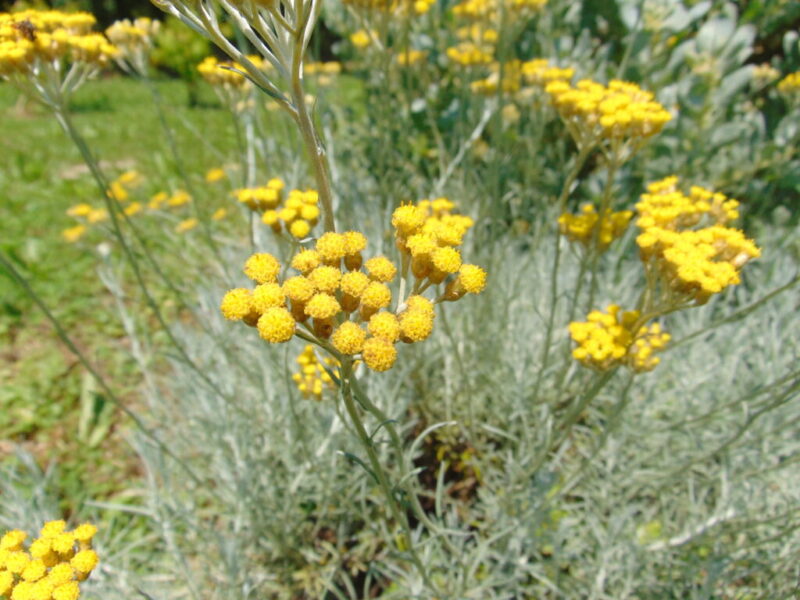
Helichrysum italicum and the glories of an ancient Greece
This tenacious shrub has been celebrating the magnificence of ancient worship since its dawn. This is attested by its Latin etymology which hides the glory of being associated with helios (sun) e chrysos (gold). With its vigorous and silvery branches, the head of the sun god was crowned Apollo and the goddess of wisdom and war Athens.
Kissed by the sun, Helichrysum italicum grows wild in the wild Central and Southern Italy, developing on rocky, stony and sometimes inhospitable soils and enclosing the great prestige of remembering in color and name two precious metals, such as silver and oro. In fact, the foliage is characterized by a shiny gray that has no equal, the inflorescences by a deep yellow, which instead aims to match the splendor of the sun. Just the flowers of helichrysum, said Perpetuini, insofar as they are capable of persisting for a long time on the plant even after fading, they were used as symbol of love and his immortality in the celebrations of marriage. Even today in the houses of Greece, the inhabitants are used to hanging twigs or interlacing of helichrysum as a good omen.
The plant is widely recognized as aromatica for the fragrance of the foliage, which brings to mind the penetrating perfume of licorice. Already in the Greco-Roman era and in the Middle Ages, it was appreciated as a plant officinale, finding use in respiratory, rheumatic and allergic diseases. To date, Helichrysum italicum it is also used as a spice in kitchen. The dried leaves flavor various dishes based on vegetables and white meats.
Able to give generous vegetation and flowering, this species is not lacking in a garden that wants to pay homage to the Mediterranean flora, capable of loving and aspiring with all its strength to the grandeur of the sole.















